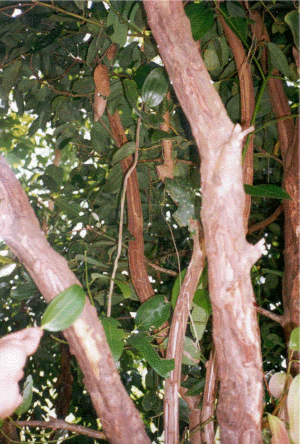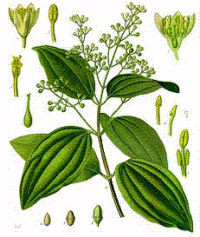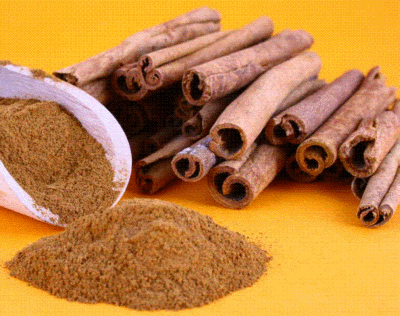 SKC Films Library SKC Films Library |
|
|
| SKC Films Library >> Agriculture >> Plant Culture >>
Field Crops |
| Cinnamon a spice known for its pleasant, sweet taste and odor "Common" cinnamon comes from the inner bark of branches of the cinnamon tree (Cinnamomum zeylanicum), which is native to the tropical regions of Madagascar, Sri Lanka, and southwestern India; Chinese cinnamon (Cinnamomum cassia), which produces a more pungent but cheaper type of cinnamon, is native to Burma. The cinnamon plant is an evergreen tree that can reach a height of 30 feet in the wild. It has dark green oval leaves, tiny pale-yellow flowers, and its fruit is shaped like an acorn. It is a member of the laurel family, Lauraceae.
Cinnamon trees grown for their bark are usually kept dwarfed (about 6-8 feet) by cutting the tree close to the lower buds. The bark of the lower branches is peeled for use as cinnamon. In Sri Lanka, the bark is usually peeled in April and November. As the bark dries, it curls up and turns light brown, forming cinnamon sticks. The sticks can be used as is, or ground into a powder. Bark is usually harvested every other year, with the tree allowed to regenerate bark between cuttings. It takes about two years for a newly planted cinnamon tree to reach a height suitable for harvest. An oil is also prepared from the leaves, fruit, and root of the cinnamon tree. How long a cinnamon tree can produce usable bark is unknown, but some plantations in Sri Lanka have been in operation for well over a century.
Sri Lanka is the world's largest producer of cinnamon -- up to 80-90% of the total annual supply. Seychelles is also an important producer, with the Philippines, Burma, and a few islands in the West Indies also producing relatively significant quantities. Cinnamon is one of the oldest spices known to man, with written references found in ancient Egypt and Mesopotamia. In the Bible, Moses commanded his people to use cinnamon oil as a major ingredient in the "holy anointing oil" used to bless altars. As a flavoring spice, cinnamon was highly prized by European royalty; this, combined with the use of cinnamon oil as an herbal medicine, made cinnamon one of the most highly sought after spices in the world. Cinnamon oil has been scientifically shown to have antifungal, antiviral, bactericidal, and larvicidal abilities. There is also evidence that cinnamon oil is effective as a pain reliever, can help reduce anxiety and stress, and may even give a boost to one's vitality. Ancient herbalists used cinnamon oil to relieve pre-menstrual cramps, a digestive stimulant, and for a host of disorders believed caused by lack of blood circulation. |
SKC Films Library >> Agriculture >> Plant Culture >> Field Crops This page was last updated on 02/01/2017. |


